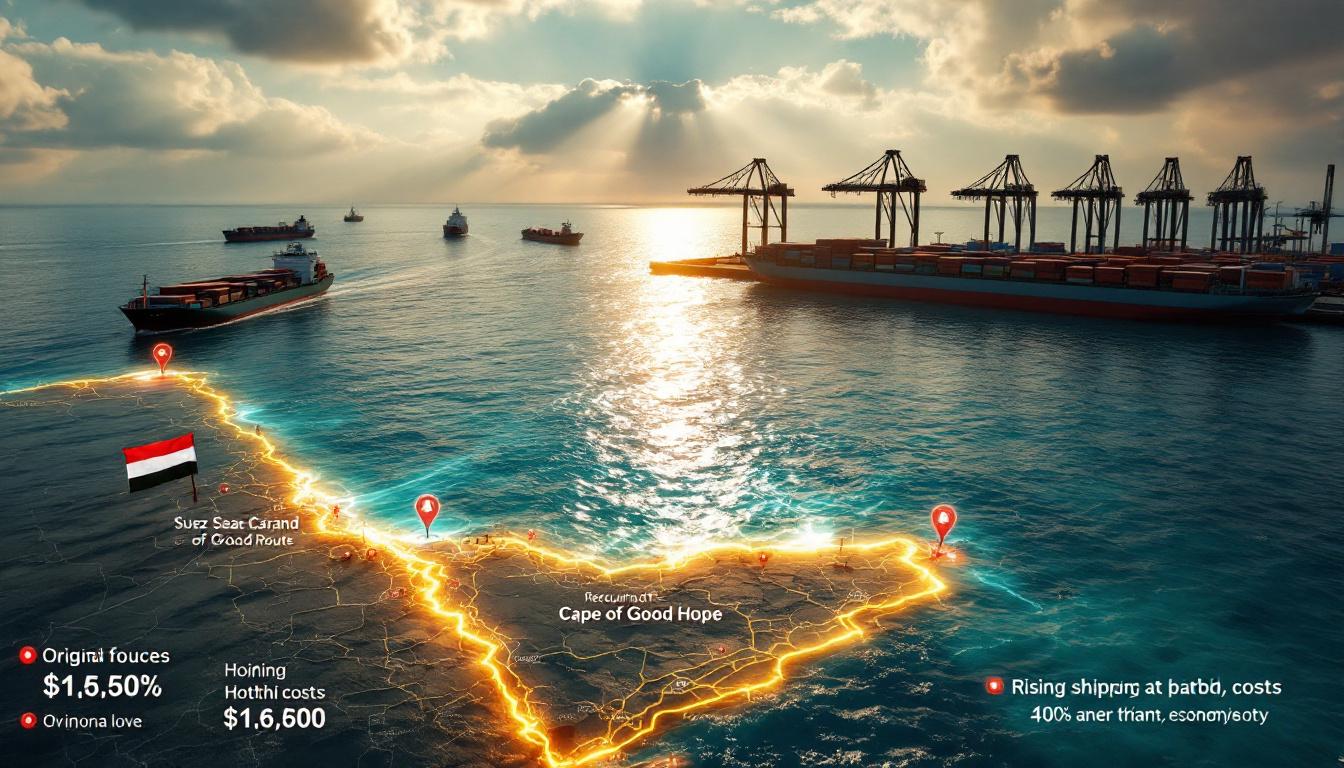Valterra's Profit Plunges 98% Following Mine Flooding and Spinoff Costs
Johannesburg-based platinum producer Valterra Platinum Ltd. has reported a staggering decline in profitability for the first half of 2025, with profits falling by up to 98% compared to the previous year. This dramatic downturn stems from a perfect storm of operational disruptions and corporate restructuring expenses that have severely impacted the company's financial performance.
The former Anglo American Platinum Ltd., now operating as Valterra following its June 2025 spinoff, faces significant challenges as it navigates both weather-related production issues and the financial aftermath of its corporate separation.
The Extent of Profit Decline
According to Valterra's official financial statement, first-half profits for 2025 have collapsed by nearly 98% year-over-year. This precipitous decline represents one of the most significant profit reductions in the company's history and has raised concerns among investors and industry analysts alike.
The company, which remains South Africa's largest platinum producer, attributed this decline primarily to a 25% reduction in platinum group metals (PGM) sales volumes alongside substantial one-time expenses related to its corporate restructuring.
"Valterra's financial performance was severely impacted by both operational disruptions at key mining sites and the significant costs associated with our corporate demerger," the company stated in its financial disclosure.
Key Factors Behind the Profit Collapse
The profit decline stems from three primary factors:
-
Reduced PGM Sales Volumes: Sales of platinum group metals fell by 25% compared to the same period in 2024, creating significant revenue shortfalls.
-
Demerger-Related Expenses: The company incurred one-time costs totaling 1.4 billion rand (approximately $79 million) related to its separation from Anglo American Plc.
-
Operational Disruptions: Production interruptions at the Amandelbult mine complex significantly reduced output volumes during a critical production period.
Despite these challenges, the company's share price responded positively to the financial announcement, rising as much as 5.5% in Johannesburg trading. This seemingly contradictory market reaction suggests investors had anticipated even worse results or are focusing on the company's future prospects rather than current performance.
What Caused the Operational Disruptions at Valterra's Mines?
The operational challenges faced by Valterra were primarily weather-related, with severe natural events creating significant mining industry strategies disruptions during early 2025.
Weather-Related Production Challenges
February 2025 saw unprecedented rainfall across South Africa's platinum mining region, resulting in severe flooding at several key mining operations. The Amandelbult mine complex, one of Valterra's flagship production sites, experienced the most significant impact.
The flooding necessitated temporary production halts for safety reasons and damaged critical infrastructure, including water pumping systems essential for underground mining operations. With underground shafts partially flooded, the company faced extensive recovery work before full production could resume.
"Heavy rain and flooding in February disrupted operations at the firm's Amandelbult mine," Valterra reported, noting that recovery efforts continued throughout the first half of the year.
Mining analysts note that climate change has increased weather-related risks for South African mining operations, with more frequent extreme weather events affecting production reliability in the region. This trend follows similar patterns seen elsewhere in the mining world, including the recent Paladin Energy halt at its Namibian operations.
Impact on Production Targets
Despite these challenges, Valterra has maintained its annual refined production target range of 3-3.4 million ounces of platinum group metals. However, the company now expects to achieve only the lower end of this production range due to the first-half disruptions.
The company has implemented comprehensive operational recovery plans following the weather disruptions, including:
- Accelerated water management system upgrades
- Increased production from unaffected mining areas
- Optimized processing schedules to maximize output from available ore
- Enhanced weather monitoring and emergency response protocols
These measures aim to stabilize production for the remainder of 2025, though the first-half shortfalls cannot be fully recovered within the calendar year.
How Has the Anglo American Spinoff Affected Valterra?
The corporate separation from Anglo American represents a watershed moment in Valterra's corporate history, bringing both immediate challenges and potential long-term opportunities.
The Demerger Process and Costs
Valterra officially separated from Anglo American Plc in early June 2025, completing a complex demerger process that had been planned as part of Anglo's broader corporate restructuring strategy. This separation incurred substantial one-time costs totaling 1.4 billion rand ($79 million).
These expenses included:
- Legal and advisory fees
- Restructuring of corporate services
- Establishment of independent IT systems and infrastructure
- Employee separation and retention programs
- New corporate branding and identity development
While these costs significantly impacted first-half profits, they represent non-recurring expenses that should not affect future performance periods.
Notably, despite these short-term financial impacts, Valterra's stock has gained approximately 24% since separating from Anglo American, indicating positive market sentiment about the company's independent future.
Anglo American's Strategic Restructuring
The spinoff of Valterra forms part of Anglo American's broader corporate restructuring initiative announced in late 2024. Anglo committed to divesting its coal, nickel, platinum, and diamond businesses to focus primarily on iron ore and copper assets, which it views as critical materials for the global energy transition.
This strategic shift reflects Anglo's assessment of long-term commodity trends and its desire to concentrate capital on resources with the strongest growth prospects. For Valterra, the separation creates both challenges and opportunities:
Challenges:
- Loss of financial backing from a diversified mining giant
- Need to establish independent corporate systems and governance
- Responsibility for standalone capital raising and financial management
Opportunities:
- Greater operational autonomy and strategic flexibility
- Ability to focus exclusively on PGM market opportunities
- Potential for more agile decision-making and market responses
What's Happening in the Platinum Market in 2025?
The broader platinum market has experienced significant volatility in 2025, with price movements creating both opportunities and challenges for producers like Valterra.
Current PGM Price Trends
Platinum prices have surged dramatically in 2025, rising 58% since January (as measured through July). This impressive performance has been accompanied by similarly strong gains in palladium, which has increased by 43% during the same period.
Most of these gains occurred since early May 2025, creating a rapidly improving price environment that partially offsets Valterra's operational challenges. The timing of this price recovery is particularly beneficial as the company works to recover from its first-half disruptions.
| Metal | Price Increase (YTD 2025) | Primary Growth Period | Key Demand Drivers |
|---|---|---|---|
| Platinum | 58% | Since May 2025 | Investment demand, Chinese jewelry fabrication |
| Palladium | 43% | Since May 2025 | Industrial applications, supply constraints |
| Gold | Moderate increase | Throughout 2025 | Investment safe haven |
| Silver | Moderate increase | Throughout 2025 | Industrial and investment demand |
Market Drivers for PGM Recovery
According to UBS Group analysts, the platinum rally "has lifted the PGM basket price above cost support" as market focus shifts "to market deficits." This analysis suggests the price recovery stems from fundamental supply-demand imbalances rather than speculative activity.
Key drivers behind the strengthening PGM market include:
- Growing Investment Demand: Increasing investor interest in precious metals as inflation hedges and portfolio diversifiers
- Rebounding Chinese Jewelry Fabrication: Recovery in China's luxury goods market driving increased platinum consumption
- Supply Constraints: Production challenges across major mining regions limiting available metal supplies
- Industrial Demand Resilience: Continued strong demand from catalytic converter manufacturers and other industrial users
These factors have created a supportive price environment that may help Valterra recover financially in the second half of 2025, despite its operational challenges. Additionally, gold price forecast trends suggest continued strength in precious metals markets more broadly.
Industry Challenges for South African Producers
South Africa remains the world's dominant platinum producer, accounting for approximately 80% of global platinum output. This concentration creates both strategic advantages and vulnerabilities for the country's mining sector.
Regional producers like Valterra have weathered prolonged PGM price slumps in recent years, forcing operational streamlining and cost-cutting measures across the industry. The recent price improvements offer welcome financial relief after this challenging period.
However, South African producers continue to face unique challenges, including:
- Intermittent power supply disruptions from the national utility
- Labor relations complexities in the mining sector
- Rising production costs and decreasing ore grades
- Infrastructure limitations affecting logistics and transport
How Is Valterra Responding to These Challenges?
Valterra has implemented a comprehensive response strategy to address its financial and operational challenges.
Cost Management Initiatives
The company reported implementing cost-saving measures totaling 2.1 billion rand during the first half of 2025. These significant savings partially offset the profit decline resulting from reduced sales volumes and demerger expenses.
While specific details of the cost-saving program weren't disclosed, typical measures in the mining sector include:
- Optimizing mining operations to reduce energy consumption
- Streamlining administrative functions following the demerger
- Renegotiating supplier contracts as an independent entity
- Deferring non-essential capital expenditures
- Implementing workforce efficiency improvements
These cost-control measures demonstrate management's proactive approach to addressing the company's financial challenges and protecting shareholder value during a difficult transition period.
Market Position and Performance
Despite the significant profit decline, Valterra's market performance has remained remarkably resilient. The company's share price rose up to 5.5% following the announcement of its first-half results, suggesting investors are focusing on future potential rather than current challenges.
Since separating from Anglo American in June 2025, Valterra's stock has gained approximately 24%, outperforming many industry peers. This positive market reception indicates confidence in the company's long-term prospects despite its short-term operational difficulties.
The company is actively implementing recovery strategies to address production shortfalls, with management expressing confidence that second-half performance will show meaningful improvement as weather-related disruptions fade and cost-saving measures take full effect.
What Are the Long-Term Outlook and Risks for Valterra?
While navigating immediate challenges, Valterra must also position itself for long-term success in a rapidly evolving market environment.
Industry Transformation Challenges
Perhaps the most significant long-term risk facing Valterra comes from the automotive sector's ongoing transformation. As the primary consumer of platinum group metals, the auto industry's shift toward electric vehicles creates uncertainty for PGM demand.
Electric vehicles don't currently utilize platinum group metals in significant quantities, unlike internal combustion engines that require PGMs for catalytic converters. This technological shift potentially threatens a major demand source for Valterra's primary products.
The timeline and extent of this transformation remain uncertain, with hybrid vehicles (which still use catalytic converters) likely to maintain significant market share during the transition period. Nevertheless, the long-term trend represents a structural challenge requiring strategic adaptation.
Analyst Perspectives on PGM Markets
UBS Group analysts have noted that the PGM basket price now exceeds cost support levels, indicating a more sustainable market environment. Their analysis suggests market dynamics are shifting toward supply deficits rather than the oversupply conditions that previously suppressed prices.
This fundamental shift could support stronger pricing over the medium term, providing Valterra with an improved financial environment as it navigates its corporate transition. The growing investment demand and jewelry fabrication noted by analysts also suggest diversifying demand sources beyond the automotive sector.
"The platinum rally has lifted the PGM basket price above cost support, as the focus shifts to market deficits," UBS analysts observed, highlighting the improving supply-demand balance in the market.
Future Strategic Considerations
To ensure long-term viability, Valterra will need to address several strategic considerations:
-
Diversifying Customer Base: Reducing dependence on the automotive sector by developing new applications and markets for PGMs
-
Technology Adaptation: Exploring potential PGM applications in emerging technologies, including hydrogen fuel cells, which could create new demand sources
-
Operational Resilience: Improving mining infrastructure to better withstand weather-related disruptions, which may increase with climate change
-
Cost Structure Optimization: Maintaining the cost discipline established during 2025's challenges to improve profitability regardless of market conditions
-
Exploration and Resource Development: Ensuring long-term mineral reserves through strategic exploration and resource development
By addressing these strategic priorities, Valterra can potentially transform current challenges into opportunities for long-term growth and stability. In an environment of increasing market volatility hedging, the company may find new ways to stabilize its financial performance.
FAQ About Valterra's Financial Situation
What is Valterra Platinum Ltd?
Valterra Platinum Ltd is a Johannesburg-based platinum mining company that was formerly known as Anglo American Platinum Ltd until its spinoff from Anglo American Plc in June 2025. It is a significant producer of platinum group metals with operations primarily in South Africa.
How significant was Valterra's profit decline?
Valterra reported that first-half profits likely fell by up to 98% in 2025, representing a dramatic reduction in financial performance due to operational disruptions and one-time costs associated with its corporate restructuring.
What specific weather events impacted Valterra's operations?
Heavy rainfall and flooding in February 2025 significantly disrupted operations at the company's Amandelbult mine complex, contributing to a 25% reduction in platinum-group metals sales volumes.
How much did the spinoff from Anglo American cost Valterra?
The demerger from Anglo American Plc cost Valterra 1.4 billion rand (approximately $79 million) in one-time expenses, which significantly impacted the company's first-half profit performance.
What cost-saving measures has Valterra implemented?
Valterra implemented cost-saving initiatives totaling 2.1 billion rand during the reporting period, which helped partially offset the profit decline resulting from operational disruptions and spinoff costs.
What investment opportunities might arise from Valterra's situation?
The company's current challenges may present investment opportunities 2025 for those with a long-term perspective, particularly if PGM prices continue their upward trend and operational issues are resolved.
Disclaimer: This article contains financial analysis and forecasts based on currently available information. Market conditions and company performance may change. Readers should conduct their own research before making investment decisions based on this information.
Looking to Invest in the Next Major Mineral Discovery?
Discover significant ASX mineral discoveries as they happen with Discovery Alert's proprietary Discovery IQ model, turning complex mining data into actionable investment insights. Visit the Discovery Alert discoveries page to understand how historic discoveries like De Grey Mining and WA1 Resources generated substantial returns, and begin your 30-day free trial today.




